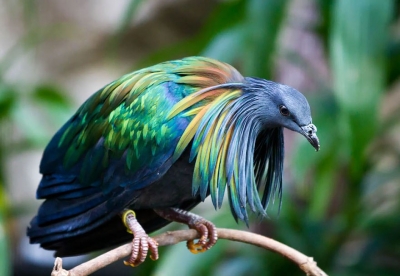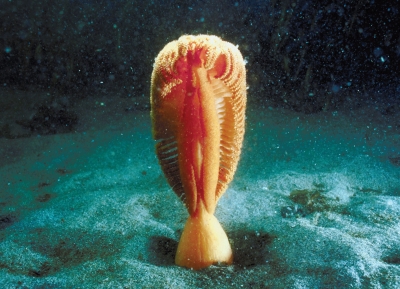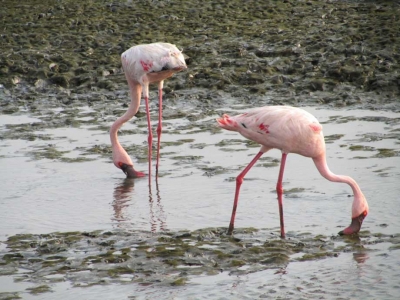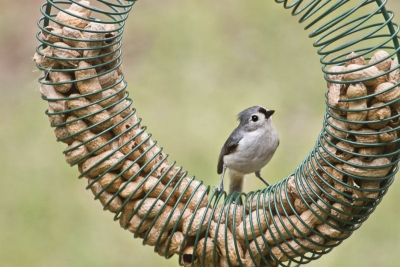
Pigeons are here, there, everywhere, and are generally considered a nuisance. But, there’s one pigeon that draws gasps of admiration – and that’s the Nicobar pigeon (Caloenas nicobarica). It’s colourful plumage is what makes it so attractive. It also happens to be one of the largest pigeons and is the member of its genes. Also known as vulturine pigeon, hackled pigeon, or white-tailed pigeon, its bright plumage is a contrast to its close relative the dodo which is a dull grey. Nicobar pigeons birds are found only in some parts of the world – the Andaman and Nicobar islands in Southeast Asia. They usually avoid human contact and other predators, hence not much is known about the bird. Though one can spot them, they tend to breed on remote and uninhabited islands. Their behaviour is quite different from the other pigeons and doves.
Striking appearance
It has a sturdy body with a small head, long legs and wings, and a small white tail. Adults grow up to 16 inches and weigh about 1 pound. Females are heavier. The feathers on the head and the neck are blue-grey. The mane is covered with iridescent long purple hackles. The legs are purplish red in colour with long yellow claws. Their bills are black and hooked and have a black knob near the base. Body feathers are iridescent in shades of green, blue, hints of copper and gold. Males and females both have the same plumage, but the male is larger than the female and has brown iris, while the female has a white iris. Also, he females have a smaller knob on their bills.
Habitat
These pigeons are found mainly in South East Asia and the Pacific – from the Nicobar Islands to Thailand, Malaysia, Indonesia, the Philippines, and Papua New Guinea, the Solomon Islands, Palau, Myanmar, and the islands near Cambodia and Vietnam. They make their homes in forests and mangroves as they need a constant supply of food. They are nomadic by nature and fly from place to place within their range.
Food
Fruits, seeds, and small insects make up their meal. Their strong gizzard with its gizzard stone helps them feed on nuts with tough shells. The stone helps them grind up hard food items.
Raising the family
In the wild, these birds breed year-round, but in places where there is no human intervention. They are monogamous, and hence, mate for life. The male selects the nesting site and gathers all the required materials. The female then arranges them. Nests are pretty untidy and consist of twigs and dried leaves perched up in the trees. Sometimes there are several nests in a tree built by different members of a flock. The female lays only one egg per clutch, which hatches after a three-four weeks. The adults regurgitate their food and feed the chick crop milk. The fledglings get independent only after a month, but choose to stay in the nest for some more time. The young ones are dark coloured for around two years, and then they get the adult white tail. Nicobar pigeons live till they are 8 – 12 years in the wild and longer in captivity.
Conservation status
The species has been listed as “Near Threatened” by the IUCN because of dwindling forests, and because they are prey for cats and rats. Hunting of the birds by humans for food, the pet trade, and for their gizzard stones which are used as jewellery has also caused their numbers to decline.
Fascinating facts
- These pigeons travel in large flocks of around 80-85 birds. During the day, they don’t mind the presence of humans, but at night, they prefer flying to uninhabited islands.
- The birds’ white tail can be seen in flight. It guides other birds while flying at night or in the dark. Each bird follows the other’s tail while flying in a flock.
- All pigeons suck up water similar to using a straw.
- Some keep their neck plumage erect, during courtship or while displaying aggressive behaviour.
- Nicobar pigeons are not very vocal, they normally coo. Only when they are scaring away predators do they make a sound that resembles a grunt.
Picture Credit : Google





